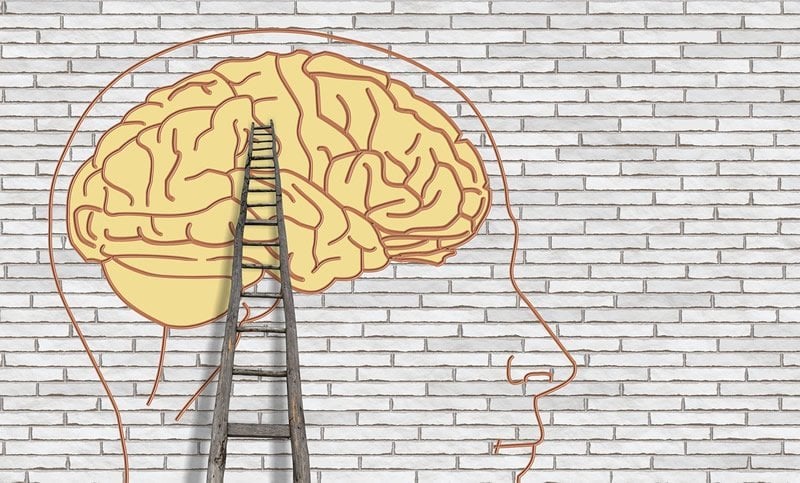Summary: Neuroimaging study reveals striatal dysfunction may be a biomarker for schizophrenia.
Source: Chinese Academy of Sciences Headquarters
Around four in a thousand people worldwide suffer from schizophrenia, according to scientific estimates. The disease affects people from all walks of life, including Vincent van Gogh, the painter Agnes Martin, mathematician John Nash and Eduard Einstein, a son of the great physicist. The disease touches men and women equally.
Despite its prevalence, however, schizophrenia has remained a mystery. Diagnosis has relied on patient behavior, such as hallucinations, delusions and disordered thinking, rather than on quantitative biomarkers. As a result, psychiatrists’ ability to objectively diagnose and treat people with the illness has been impaired.
New research, led by Prof. LIU Bing and Prof. JIANG Tianzi from the Institute of Automation of the Chinese Academy of Sciences and their collaborators, may change this situation, though. The scientists have recently developed a novel imaging marker that may help in the personalized medicine of psychiatric disorders.
The study, published in Nature Medicine on Mar. 23, shows that abnormal striatal function can be a promising biomarker for the diagnosis of schizophrenia and treatment response.
In their search for suitable biomarkers, the scientists collected multimodal neuroimaging data from a total of 1100 individuals with schizophrenia and healthy controls from 2010-15.
Using the large dataset, the researchers first proposed the concept of “functional striatal abnormalities.” They then used artificial intelligence technology on resting state fMRI data to map striatal dysfunction at the individual level.
The researchers showed, for the first time, that striatal dysfunction was effective in distinguishing schizophrenia patients and that such dysfunction was also responsible for poorer antipsychotic response.
Based on the newly developed biomarker, the researchers extended their research to other neuropsychiatric disorders. They showed that individuals with bipolar disorder also showed striatal dysfunction that overlapped with the dysfunction associated with schizophrenia.
After combining different levels of data, the researchers suggested that striatal dysfunction is related to the dopaminergic system and polygenic genetic risk for schizophrenia.

The study also evaluated using this biomarker to predict diagnostic labels and treatment responses across several different hospitals.
The scientists hope research on the biological underpinnings of psychiatric disorders will increase understanding of disease mechanisms as well as guide new drug development.
A web-based tool developed to calculate personalized functional striatal abnormalities (FSA) score for each individual is available here.
Funding: The research was supported by the National Basic Research Program of China, the National Key Research and Development Program, the Leading Projects Program of the Chinese Academy of Sciences and the Natural Science Foundation of China.
Source:
Chinese Academy of Sciences Headquarters
Media Contacts:
ZHANG Xiaohan – Chinese Academy of Sciences Headquarters
Image Source:
The image is in the public domain.
Original Research: Closed access
“A neuroimaging biomarker for striatal dysfunction in schizophrenia”. Ang Li, Andrew Zalesky, Weihua Yue, Oliver Howes, Hao Yan, Yong Liu, Lingzhong Fan, Kirstie J Whitaker, Kaibin Xu, Guangxiang Rao, Jin Li, Shu Liu, Meng Wang, Yuqing Sun, Ming Song, Peng Li, Jun Chen, Yunchun Chen, Huaning Wang, Wenming Liu, Zhigang Li, Yongfeng Yang, Hua Guo, Ping Wan, Luxian Lv, Lin Lu, Jun Yan, Yuqing Song, Huiling Wang, Hongxing Zhang, Huawang Wu, Yuping Ning, Yuhui Du, Yuqi Cheng, Jian Xu, Xiufeng Xu, Dai Zhang, Xiaoqun Wang, Tianzi Jiang & Bing Liu.
Nature Medicine doi:10.1038/s41591-020-0793-8.
Abstract
A neuroimaging biomarker for striatal dysfunction in schizophrenia
Mounting evidence suggests that function and connectivity of the striatum is disrupted in schizophrenia. We have developed a new hypothesis-driven neuroimaging biomarker for schizophrenia identification, prognosis and subtyping based on functional striatal abnormalities (FSA). FSA scores provide a personalized index of striatal dysfunction, ranging from normal to highly pathological. Using inter-site cross-validation on functional magnetic resonance images acquired from seven independent scanners (n = 1,100), FSA distinguished individuals with schizophrenia from healthy controls with an accuracy exceeding 80% (sensitivity, 79.3%; specificity, 81.5%). In two longitudinal cohorts, inter-individual variation in baseline FSA scores was significantly associated with antipsychotic treatment response. FSA revealed a spectrum of severity in striatal dysfunction across neuropsychiatric disorders, where dysfunction was most severe in schizophrenia, milder in bipolar disorder, and indistinguishable from healthy individuals in depression, obsessive-compulsive disorder and attention-deficit hyperactivity disorder. Loci of striatal hyperactivity recapitulated the spatial distribution of dopaminergic function and the expression profiles of polygenic risk for schizophrenia. In conclusion, we have developed a new biomarker to index striatal dysfunction and established its utility in predicting antipsychotic treatment response, clinical stratification and elucidating striatal dysfunction in neuropsychiatric disorders.






